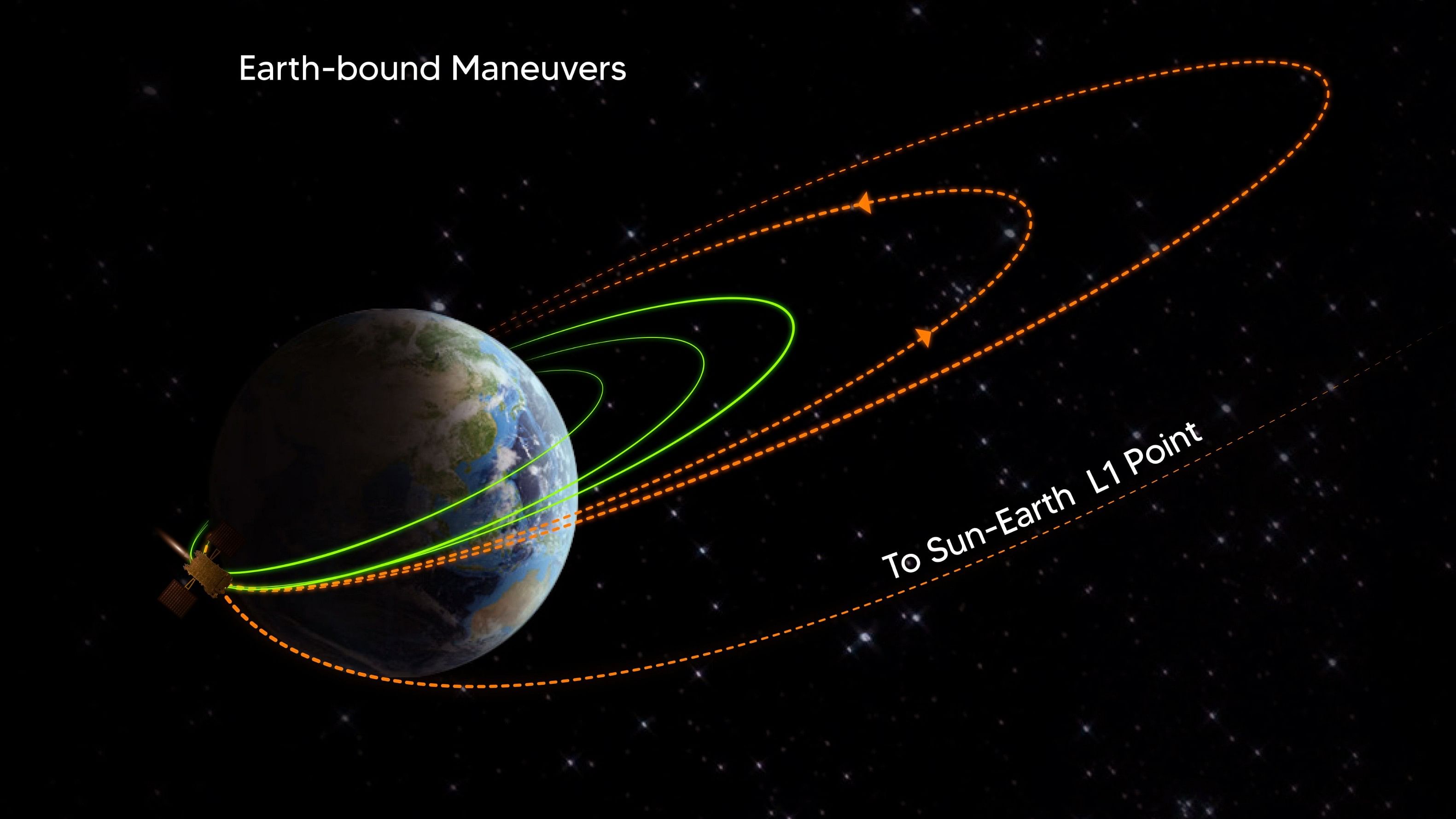
Photo by Isro of maneuvers of the Aditya-L1.
Credit: X/@isro
Bengaluru: A payload onboard India’s Aditya-L1 satellite designed to study the properties of solar wind has commenced its operations.
The Indian Space Research Organisation (ISRO) on Saturday said the Aditya Solar Wind Particle EXperiment (ASPEX) payload onboard Aditya-L1 has been performing normally. The payload has two instruments configured into it – the Solar Wind Ion Spectrometer (SWIS) and the SupraThermal and Energetic Particle Spectrometer (STEPS), low and high ion spectrometers, respectively.
The space agency said STEPS became operational on September 10 and SWIS was activated on November 2. It said the latter has exhibited “optimal performance”. Aditya-L1, India’s first space-based mission to study the sun, was launched on September 2. It is tentatively scheduled to reach L1, the first Lagrange point in the sun-earth system, on January 7.
From L1, at about 1.5 million km from the earth, Aditya-L1 will study plasma and magnetic eruptions from the corona (the outermost layer of the sun’s atmosphere) known as Coronal Mass Ejections (CMEs), apart from the patterns in coronal heating, space weather, and magnetic field measurements in the corona.
Observations to aid space weather studies
The SWIS measurements are crucial in understanding solar wind properties and their impact on the earth. With its two sensor units, SWIS has successfully measured solar wind ions, primarily protons and alpha particles. ISRO released a sample energy histogram acquired from one of the sensors, over two days in November, that illustrates variations in the proton (H+) and alpha particle (doubly ionised helium, He2+) counts.
The instrument has been configured to study the variation in the abundance of proton and alpha particles in solar wind, during the passage of CMEs.
These observations that track the change in the proton-alpha particle ratio could help provide leads to the onset of CMEs at L1. ISRO noted that enhanced alpha-to-proton ratio is often regarded as a sensitive marker of the passage of interplanetary CMEs at L1 and hence, considered crucial for space weather studies.